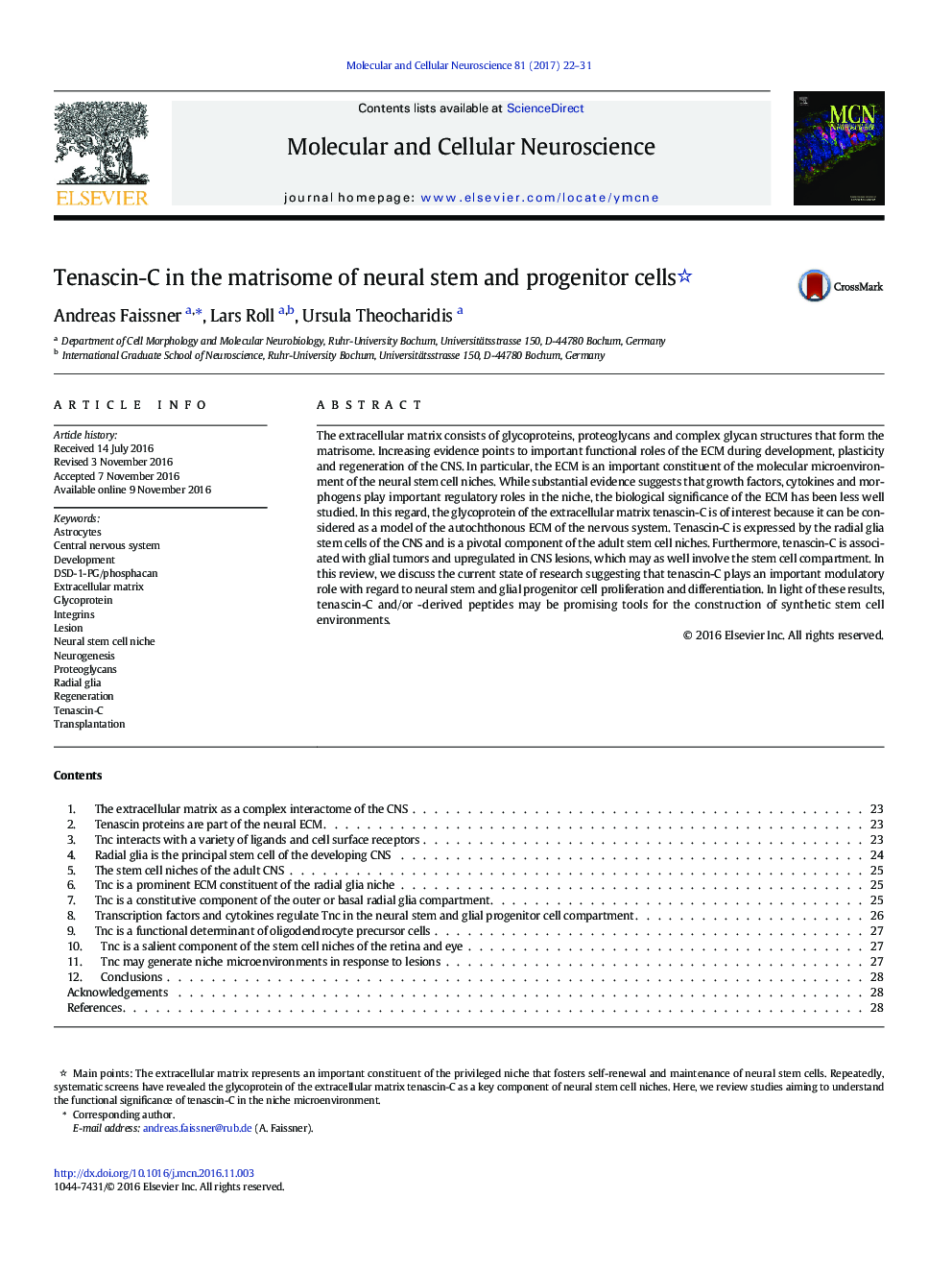| Article ID | Journal | Published Year | Pages | File Type |
|---|---|---|---|---|
| 5534366 | Molecular and Cellular Neuroscience | 2017 | 10 Pages |
â¢Neural stem cell niches comprise a specific matrisome.â¢Tenascin-C is a key constituent of neural stem cell niches.â¢Tenascin-C regulates self-renewal, proliferation, and differentiation of neural stem cells.â¢Tenascin-C may be part of stem cell milieus elicited by lesions of the CNS.
The extracellular matrix consists of glycoproteins, proteoglycans and complex glycan structures that form the matrisome. Increasing evidence points to important functional roles of the ECM during development, plasticity and regeneration of the CNS. In particular, the ECM is an important constituent of the molecular microenvironment of the neural stem cell niches. While substantial evidence suggests that growth factors, cytokines and morphogens play important regulatory roles in the niche, the biological significance of the ECM has been less well studied. In this regard, the glycoprotein of the extracellular matrix tenascin-C is of interest because it can be considered as a model of the autochthonous ECM of the nervous system. Tenascin-C is expressed by the radial glia stem cells of the CNS and is a pivotal component of the adult stem cell niches. Furthermore, tenascin-C is associated with glial tumors and upregulated in CNS lesions, which may as well involve the stem cell compartment. In this review, we discuss the current state of research suggesting that tenascin-C plays an important modulatory role with regard to neural stem and glial progenitor cell proliferation and differentiation. In light of these results, tenascin-C and/or -derived peptides may be promising tools for the construction of synthetic stem cell environments.
Graphical abstractDownload high-res image (321KB)Download full-size image
